ASUS ROG Strix RTX 2080 TI Review
Final Thoughts and Conclusion
I just can’t say enough good things about The ASUS ROG Strix RTX 2080 Ti. It is an amazing graphics card. I’ve always been partial to ASUS cards, especially after they dropped the black and red color scheme for more neutral colors. The brushed aluminum backplate looks great with the RGB ROG eye logo. Although this is a 2.7 slot card, it doesn’t look as large as say the MSI Gaming X Trio or EVGA FTW 3 cards. However, this could just be my imagination. The triple fans Strix cooler looks great, as usual. The ROG Strix 2080 Ti doesn’t overdo the RGB lighting on the car either. There is lighting above and below each fan, on the backplate and on the side of the card. It’s subtle, so it works well. The ROG eye on the backplate looks great illuminated. However, the LED OFF button on the back of the PCB is the best feature on any graphics card, ever. Especially since I had issues with their Aura Sync software, it was great to have an alternate way to disable the lighting.
The cooler is massive on the Strix 2080 Ti and it shows in the performance. While playing an average game, the temperature of the Strix 2080 Ti usually hovered around 60°C. Occasionally I’d see it hit 62°C or so. Even while running synthetic benchmarks, the Strix 2080 Ti usually stayed in the lower 60’s. Even overclocked as far as we could push it, the card never went above 68°C. This was due to the beast that is the Strix cooler. With the combination of their new Axial-Tech fans, their MaxContact Technology, six heat pipes and the 2.7 slot design of the ROG Strix RTX 2080 Ti, this card stays cool, even under the heaviest of workloads. Now, in SLI, it was a different story.
This is the one case where the 2.7 slot card is actually a disadvantage when it comes to cooling. Where the cards are so close together, the top card gets very toasty. The top card hit as high as 85°C during gaming while the bottom card maxed out at 73°C during regular testing. As for noise levels, on the default settings for the Strix 2080 Ti, the noise level hovered around 40 decibels. The default setting is 30% fan speed. With the fans set to 100%, the noise level went up to around 52 decibels. So even at 100% fan speed, the Strix 2080 Ti isn’t that loud.
I knew the card ran great but where I was surprised was with the SLI scaling. Given the NV Link interface offers much higher bandwidth than even a High Bandwidth SLI bridge, I wasn’t expecting as much of an improvement on two cards as we saw. The last system I ran SLI on had an i7-5960X and two GTX 980 Ti. That was back in mid to late 2015 not too long after Crysis 3 was released. Before this review, I went over some old SLI benchmarks. The one that stuck out to me was Crysis 3, which with the 980 ti in SLI averaged 44 frames per second and 34 on a single card. A gain of 10 FPS on average. But with the 2080 Ti, we went from 40 frames per second overage on a single Strix 2080 Ti to 66 frames per second average in SLI. Even in Red Dead Redemption 2, we gained 31 frames per second going from 45 FPS on one card to 76 FPS on two. The Strix RTX 2080 Ti has shown me that SLI is far from dead. If you can afford it that is.

The Strix 2080 Ti performed much better in gaming on the 9700K system. This just goes to show that games do better with logical cores, as opposed to hyper-threaded cores. The performance of this card was amazing. many of the games even averaging over 60 frames per second, even in 4K. With some of the games averaging well over 200 frames per second in 1080p, it shows you that this card is not meant for 1080p gaming. The ROG Strix 2080 Ti is designed for 4K gaming, VR and video editing. I wouldn’t recommend this card to anyone building a gaming PC for playing games in 1080p. I would, however, recommend this card to everyone else. The Strix 2080 Ti is a great card for someone who games on a 21:9, high refresh rate monitor. Even more so, the Strix 2080 Ti is a great card for the professional video editor. Even with editing 4K videos, my render times were drastically cut down when I went from a 1080 ti to a 2080 Ti. However, the ASUS ROG Strix 2080 Ti isn’t for the enthusiast on a budget. At the time of writing this review, you can pick up the ROG Strix RTX 2080 Ti on Amazon for a cost of only $1,279.99. That’s down for around $1,450 at launch. However, if this is something you can afford, I couldn’t recommend it more. You won’t have to worry about lowering your graphics settings for a long time to come.
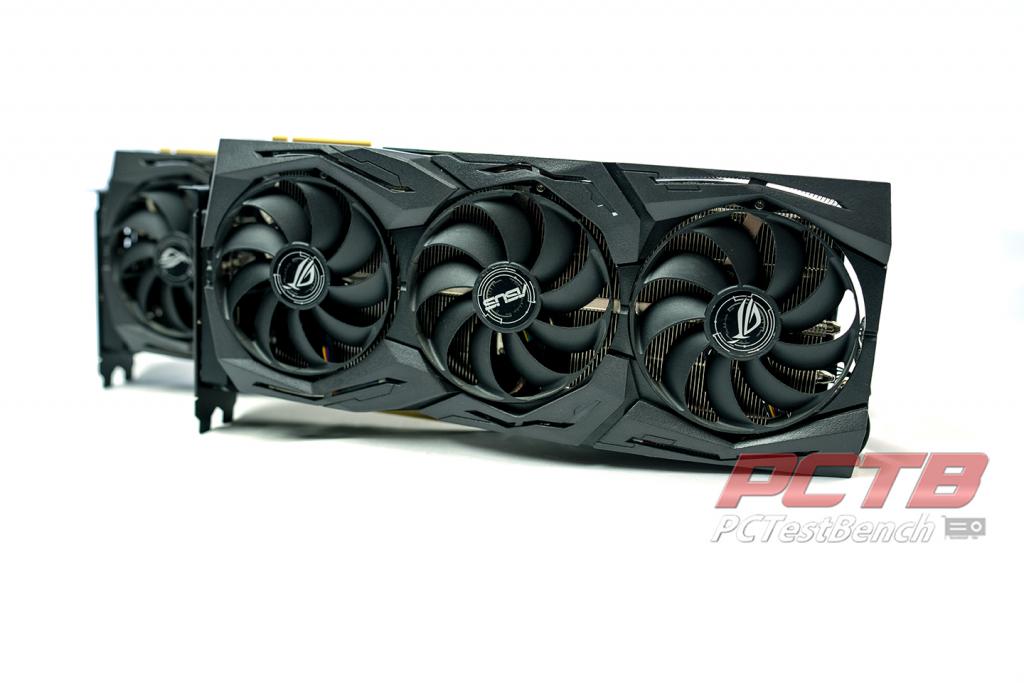
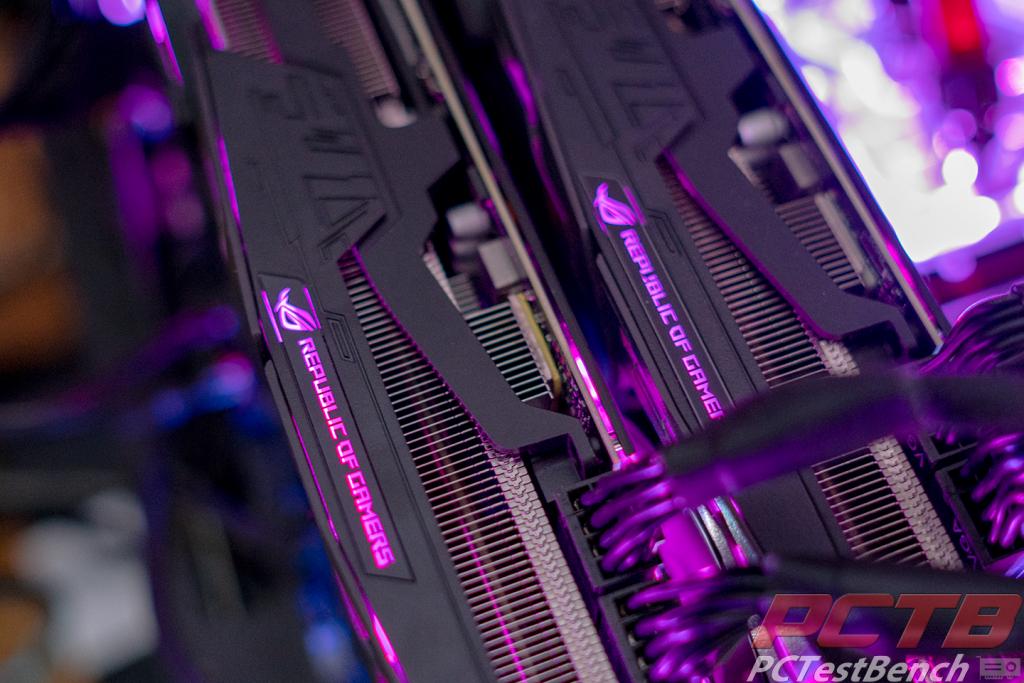
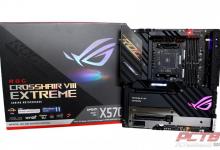


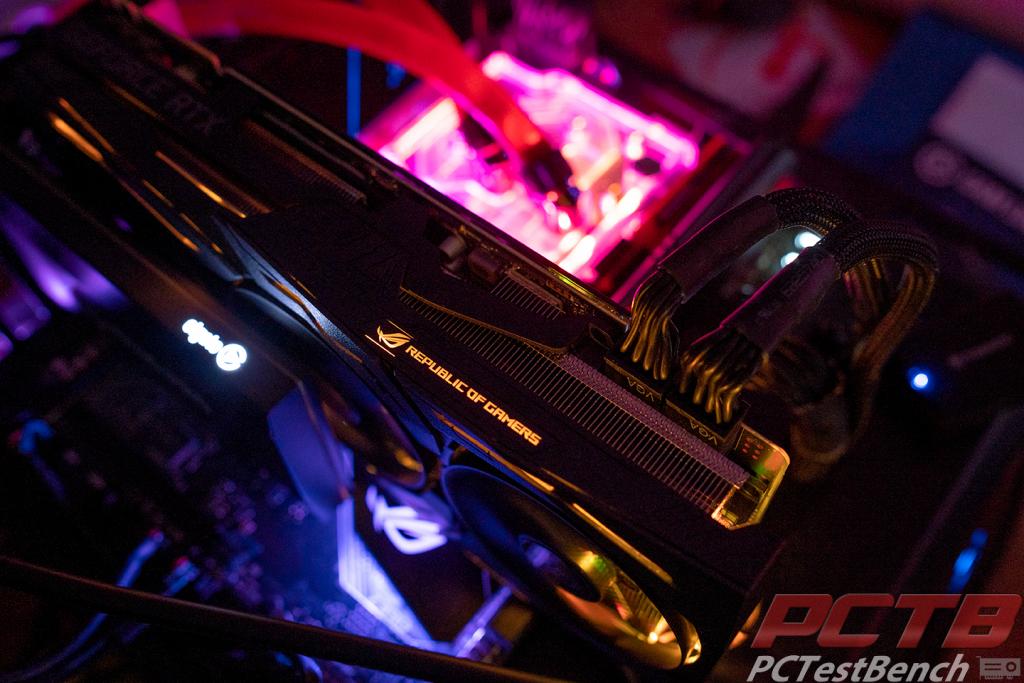


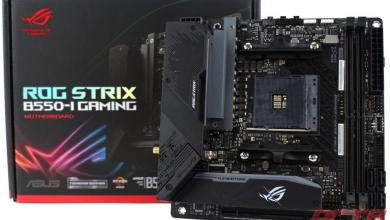
Check Out Our Amazon Store with Modders Inc
Please Support PCTestBench as Every Purchase Helps